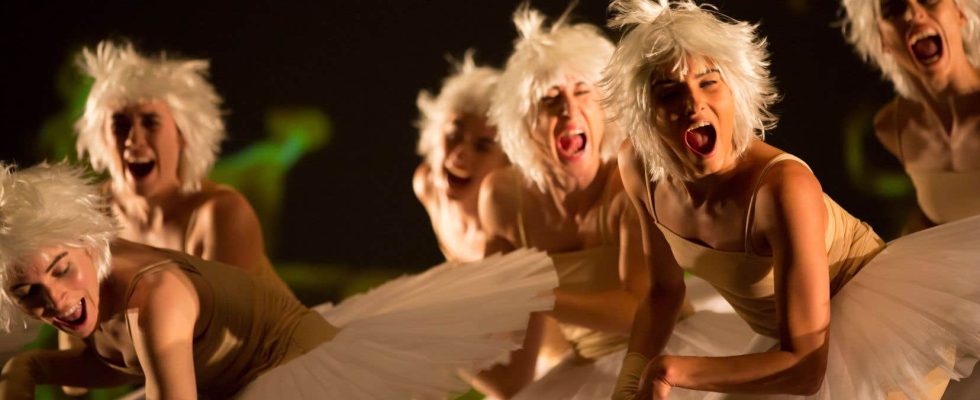Dance has always been on the move. An art of the body and movements that can elegantly overcome the language barrier, dance has always traveled. Its history has been built largely through tours, migrations, immigrations, overseas co-productions, residences abroad. In this post-pandemic period, tours are increasingly difficult to organize and finance. And more essential than ever. A look at some of these pointy-footed travelers.
Take Montreal-born Eric Gauthier, for example. After studying ballet in Montreal and Toronto, he found himself dancing at the Stuttgart Ballet in Germany, where he finished as a soloist. In 2007, he founded his dance company there. Where in 2017 he invited Quebecois Virginie Brunelle to choreograph, giving him a nice push towards elsewhere.
Now his company – which does not include any German dancers, says Mr. Gauthier, laughing, but artists from Italy, Spain, Belgium, Taiwan… – returns. To present a Swan Lake of our national Marie Chouinard, never seen here. Also another version of this classic, by Hofesh Shechter. The evening is rounded off by Minus 16very well-known and very, very effective choreography by Ohad Naharin.
We won’t see, at least not this time, Ether/Air, the order placed with Louise Lecavalier by Mr. Gauthier for his company. This is the first time that the Quebec muse has created a piece in which she does not dance; what’s more for a group. It was presented in Stuttgart at the very end of February.
The show, which completed an evening Elements with other dances on the theme of water, fire and earth, was a box office success: 10,000 tickets sold for the 10 performances. That’s a lot of spectators, by Quebec standards, for dancing.
“As a choreographer, if you are known, you can make a living doing commissions” from different companies around the world, says Mr. Gauthier. What Louise Lecavalier has just done there for the first time at the age of 65, others are making a living out of it.
This is the fourth time that Eric Gauthier and his company have come to Quebec. In 2008 and 2011, Gauthier Dance was at the Saint-Sauveur Arts Festival alone. At Danse Danse in 2018. And this year, he also presents in Toronto, Quebec, Montreal and Sherbrooke.
Almost every time, the tour lengthens a little – which clearly shows the work of building the tour organization, which requires time, connections, relationships at least in the medium term.
In Germany, where his company is based, “the arts are very well subsidized,” explains Eric Gauthier in a video interview at Duty. “Every small town has its theater, its orchestra. » His company acts as a black sheep: it belongs to a largely private theater.
“To keep my dancers alive, but also to share our dances with as many people as possible, touring is necessary,” says Mr. Gauthier.
Understanding elsewhere
What is true in a Germany that cherishes and nourishes the arts is essential in Quebec, for dance here. “We can almost count the venues that host dance in Canada on the fingers of one hand,” says Marie-Andrée Gougeon.
To keep local shows and the artists who perform them alive, touring is absolutely necessary. Marie-Andrée Gougeon began working in the international development of Quebec dance in 2006. She has extensively toured the works of Daniel Léveillé. Even today, she promotes the choreographies of Catherine Gaudet, Manuel Roque, Frédérick Gravel and Alix Dufresne, among others.
Since the pandemic, everything has been turned upside down, she says. “For the tour, there have always been many called and very few chosen. But now, the situation is the same everywhere in Western countries, those where we had developed our networks. Economically, everything is tighter. »
“Everywhere in the West, we want to make more room for the creations of diversity and First Peoples. There are no more theaters yet. If you arrive from elsewhere, your show must be truly exceptional for the doors to open. »
“That’s why we travel,” says M.me Gougeon, who gave his interview from Barcelona. “It gives us clues, it allows us to see what the movements are, the trends. It’s good to understand the landscape where you want to place a show or a choreographer,” she adds.
Gain someone’s trust
Building tours is a work of travel, relationships, networks, contact, adds Marie-Andrée Gougeon. “We saw it in confinement during the pandemic: it was not possible to really maintain contacts. »
Presence, for her, by going elsewhere or by bringing in presenters, allows you to build trust – either towards the “seller” or towards a choreographer.
“For example, for Pretty things, by Catherine Gaudet, we managed to unlock dates even before the presenters had seen the show, because they had seen a previous work, and they had confidence in it, and in us. »
Artistically, too, the journey is rich. “One of our artists says that we learn a lot about ourselves through contact with others, we define ourselves more clearly in front of them. »
Eric Gauthier puts it differently: “We all dance, it’s the common language. In my company, for example, all the dancers come from ballet, because it trains bodies the way I like them. »
“Then, it’s like making a good Bolognese sauce: it’s not just down to the quality of the tomatoes and the meat, but also the quality of the vegetables, the salt, the oregano. My dancers are also like animals: I have a tiger, an exotic bird, a horse…”, a way of saying that the differences make a rich whole.
